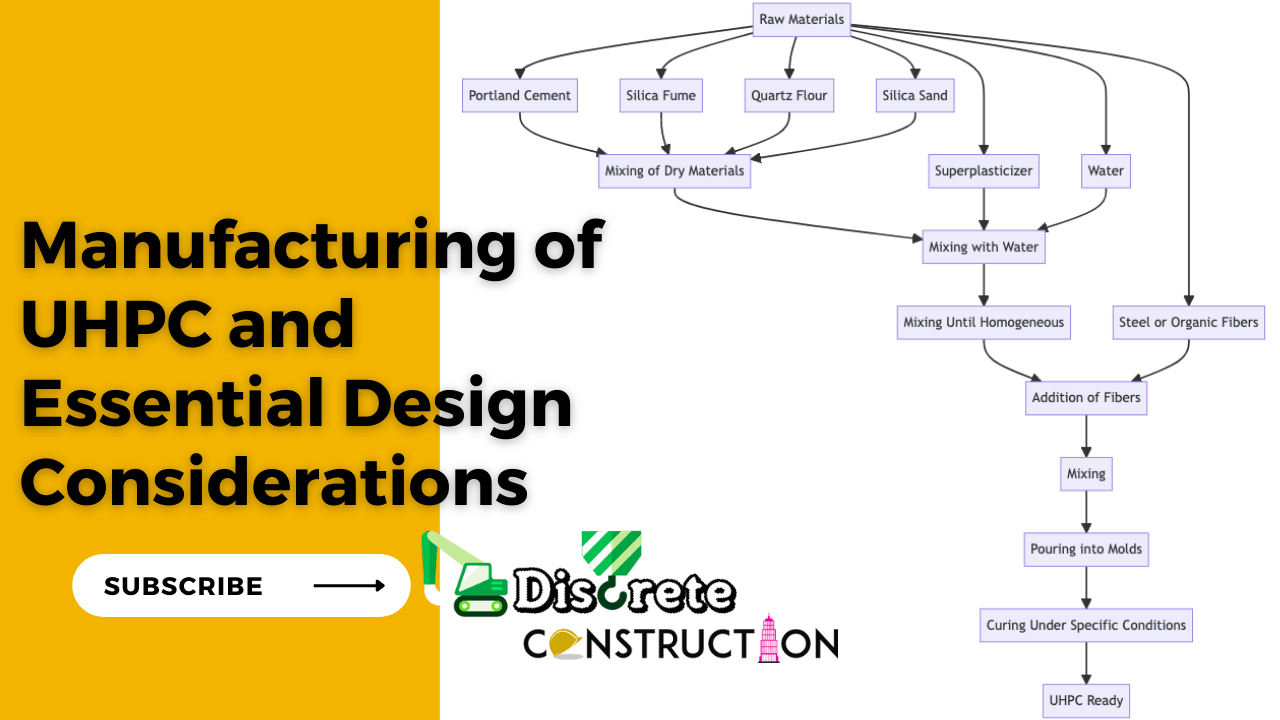As the world of construction evolves, so too do the materials we utilize to bring architectural visions to life. One such revolutionary material is Ultra-High-Performance Concrete, a composite that stands head and shoulders above traditional concrete in terms of strength, durability, and versatility. While concrete has been a cornerstone of construction for centuries, Manufacturing of UHPC brings an innovative twist to the industry, reshaping what’s possible in terms of architectural design and infrastructure longevity.
Ultra High Performance Concrete is a fine-tuned amalgamation of fine powders, fibers, and a minimal amount of water. This composition creates a compact microstructure resulting in its extraordinary properties. The real magic lies not only in the individual components but also in the precise manufacturing process and the careful consideration of its design application. These components and processes join forces to produce a material that exhibits superior compressive strengths often exceeding 150 MPa (about 22,000 psi) and improved durability due to enhanced density and a resultant decrease in porosity. Additionally, the incorporation of fibers in UHPC enhances its ductility and tensile strength, opening doors for innovative structural design possibilities.
When working with Ultra High Performance Concrete, the manufacturing of UHPC and design considerations are pivotal to achieving the optimal potential of the material in question. Manufacturing of UHPC involves a meticulously controlled process to ensure the correct ratios of the components. It is more than just a simple combination of materials; rather, it’s an intricate dance of chemistry and engineering that, when choreographed accurately, results in a substance with unmatched performance. Attention to the selection of raw materials, the specific mix design, the incorporation of fibers, and curing methods all come into play when aiming for the perfect UHPC blend.
Equally crucial are the design considerations. Given UHPC’s high strength and durability, it allows engineers and architects to rethink traditional design constraints. Design considerations for Ultra High Performance Concrete extend beyond the typical ‘strength and safety’ approach used for ordinary concrete. Instead, aspects such as long-span structures, aesthetic potential, and the reduced need for passive reinforcement come to the forefront.
The importance of these considerations can’t be overstated. They serve as a blueprint for architects and engineers to truly leverage UHPC’s unique attributes, enabling the creation of structures that are not only more durable and efficient but also more aesthetically pleasing. On the other hand, effective manufacturing processes ensure that the Ultra High Performance Concrete produced is of the highest quality, allowing its exceptional properties to truly shine.
In this day and age, where the demand for durable, resilient, and cost-effective construction materials is higher than ever, UHPC stands as a testament to the advancements in the field. The efficient manufacturing and intelligent design considerations of Ultra High Performance Concrete are playing a critical role in shaping the future of construction, helping us build a world that is not only sturdy and efficient but also visually appealing. As we delve further into this topic, we will uncover the technical intricacies that make Ultra High Performance Concrete a true game-changer in the construction industry.
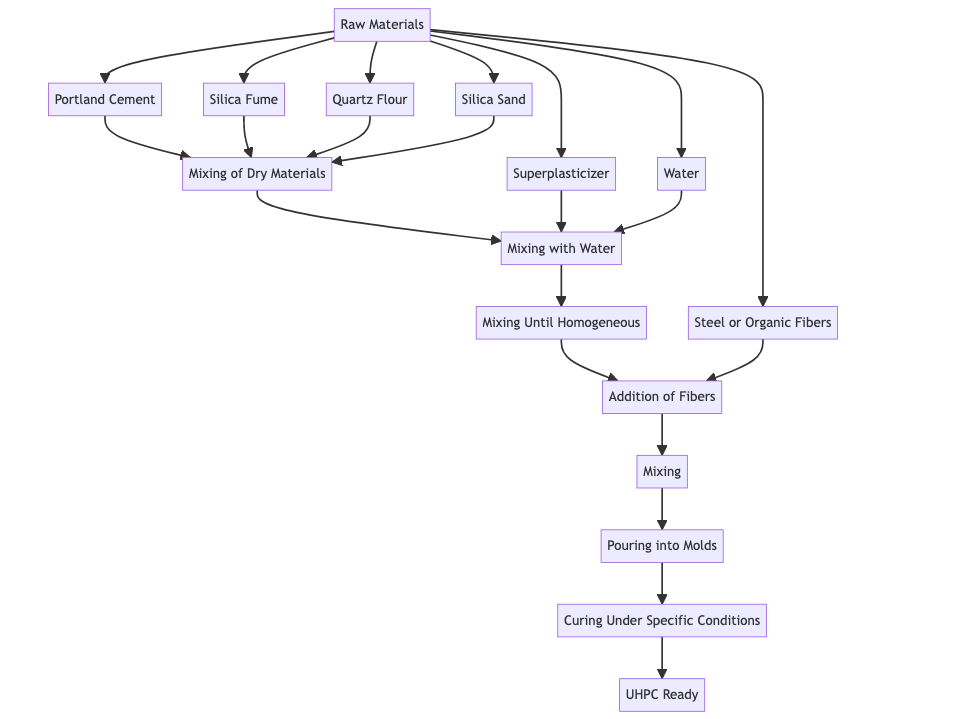
1. Manufacturing of UHPC
The manufacturing of UHPC is a marvel of modern engineering, encapsulating a meticulous blend of science and technology. Although seemingly straightforward, the procedure demands a fine balance of materials and processes to result in a construction material that outperforms conventional concrete in almost every aspect.
1.1 Raw Material Selection
The first consideration in manufacturing of UHPC is the selection of raw materials. This phase entails a stringent evaluation of components to ensure their suitability. UHPC typically comprises Portland cement, silica fume, quartz powder, fine sand, high-range water-reducing admixture (superplasticizer), water, and steel or organic fibers.
Each material has its role to play. The Portland cement provides the necessary bonding potential, silica fume and quartz powder contribute to the refinement of the concrete’s microstructure, and the fine sand aids in increasing density. The superplasticizer helps in reducing water content while maintaining workability, and the fibers contribute to the ductility and tensile strength of the mix.
1.2 Mix Design
The heart of manufacturing of UHPC lies in the mix design. The objective here is to create a mix that has the least amount of voids, leading to a denser and stronger product. This is achieved through particle packing modeling, where materials of varying sizes are arranged to fill spaces efficiently, thus improving density.
In a typical UHPC mix design, the water-to-binder (w/b) ratio is significantly lower than conventional concrete, often less than 0.20. This is made possible by using superplasticizers, which maintain the mix’s workability despite the low w/b ratio. The result is a dense matrix with extremely low porosity, contributing to UHPC’s superior strength and durability.
1.3 Fiber Incorporation
One of the defining features of manufacturing of UHPC is the inclusion of fibers in the mix, which enhances its ductility and tensile strength. Fibers are typically added after the initial mixing of the concrete components. This step requires careful control to ensure a uniform distribution of fibers in the mix, which greatly influences the UHPC’s performance.
The type and volume of fibers used are also crucial. While steel fibers provide superior ductility and strength, they can be challenging to mix uniformly due to their tendency to clump together. On the other hand, organic or polymeric fibers are easier to mix but may not provide the same level of strength enhancement. The volume of fibers typically ranges from 2% to 3% of the total volume of the mix.
1.4 Curing Process
After casting, the curing process begins. This is a vital phase in the manufacturing of UHPC that significantly impacts the material properties of the UHPC. In contrast to conventional concrete that typically cures at ambient temperatures, UHPC often requires heat curing at temperatures between 60 to 90 degrees Celsius to achieve its remarkable properties. This accelerated curing process facilitates the pozzolanic reactions and enhances the overall strength of the concrete.
The curing duration also affects the final product’s properties. While a curing period of 48 hours can achieve high strength, longer curing durations, up to 14 days, have been found to further increase the strength and durability properties of UHPC.
2. Quality Control Measures of UHPC
To ensure the desired performance of UHPC in structural applications, it is essential to implement stringent quality control measures during the manufacturing of UHPC. Some of the key quality control measures include:
2.1 Raw Material Testing
Regular testing of raw materials, such as cement, SCMs, and fibers, should be conducted to ensure that they meet the required specifications and standards for UHPC production.
2.2 Mix Design Optimization
The optimization of the UHPC mix design, including the selection of the appropriate w/c ratio, SCM content, and fiber volume fraction, is critical for achieving the desired mechanical properties and durability. This can be achieved through an iterative process of trial mixes and testing, adjusting the mix proportions until the desired performance is achieved.
2.3 Fresh Property Testing
The fresh properties of UHPC, such as workability, consistency, and rheology, should be regularly monitored and tested to ensure that the mixture can be easily placed, compacted, and finished without compromising its final properties.
2.4 Hardened Property Testing
The hardened properties of UHPC, including compressive strength, tensile strength, and durability, should be tested according to established standards and specifications. These tests help to verify that the UHPC meets the desired performance criteria for the specific structural application.
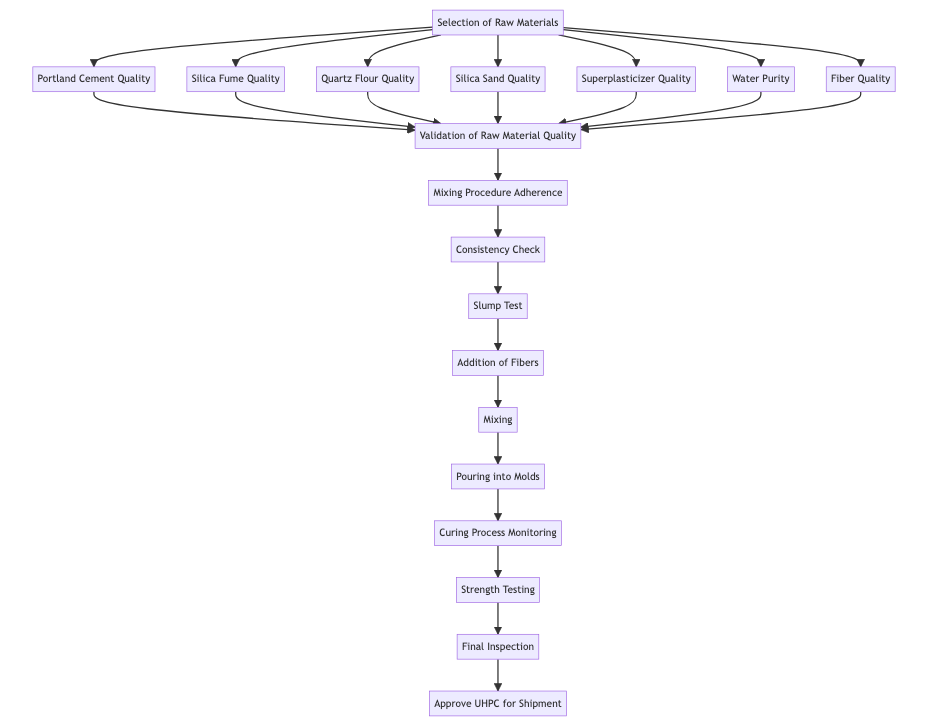
3. Design Strategies of UHPC
The unique properties of UHPC, such as its high strength, ductility, and durability, necessitate the adoption of specific design strategies to fully harness its potential in structural applications. Some of the key design considerations include:
3.1 Structural Member Design
Due to UHPC’s exceptional strength and ability to deform under higher loads, structural members designed with this material can be optimized for reduced size and weight (as shown in Figure-3), leading to more efficient and cost-effective structures. For instance, thinner sections can be designed for bridge decks and girders, while maintaining the required load-bearing capacity.

3.2 Reinforcement and Detailing
The design of reinforcement and detailing for Ultra High Performance Concrete structures must account for the exceptional bond strength between the fibers and concrete, as well as the material’s post-cracking behavior. This may involve using less conventional reinforcement or optimizing the reinforcement layout to take advantage of the material’s inherent ductility and crack resistance.
3.3 Connection Design
UHPC’s high strength and ductility enable the design of innovative and efficient connections for precast and composite structures. For example, UHPC can be used as a jointing material in precast concrete elements (as shown in Figure-4), providing a strong and durable connection with minimal reinforcement.

3.4 Durability and Service Life Design
The enhanced durability of Ultra High Performance Concrete allows for the design of structures with extended service lives, requiring less maintenance and repair. By considering the material’s resistance to chemical attack, freeze-thaw cycles, and other environmental factors, designers can develop structures that require minimal intervention over their lifespan.
4. Case Studies of UHPC
Ultra High Performance Concrete (UHPC) has revolutionized the construction industry by its ability to defy the traditional limitations of concrete. Its impressive strength, durability, and resilience have paved the way for groundbreaking applications in various sectors. By examining real-world cases, we can gain valuable insights into the design and manufacturing considerations that underpin UHPC’s versatile utilization.
4.1 Mars Hill Bridge, Iowa
One of the most compelling examples of Ultra High Performance Concrete application is the Mars Hill Bridge in Iowa, USA. This was the first bridge in the United States to be constructed entirely of UHPC. The design of the bridge leverages the high compressive and tensile strengths of UHPC, resulting in a structure that is highly resistant to environmental stresses and has an estimated lifespan of over a hundred years.
The manufacturing considerations for this project were guided by the need for a material that could withstand harsh weather conditions and heavy loads. The Ultra High Performance Concrete used had a compressive strength of over 180 MPa and a flexural strength of approximately 40 MPa. The material was heat-cured to facilitate the hydration process, thereby maximizing its strength and durability properties.
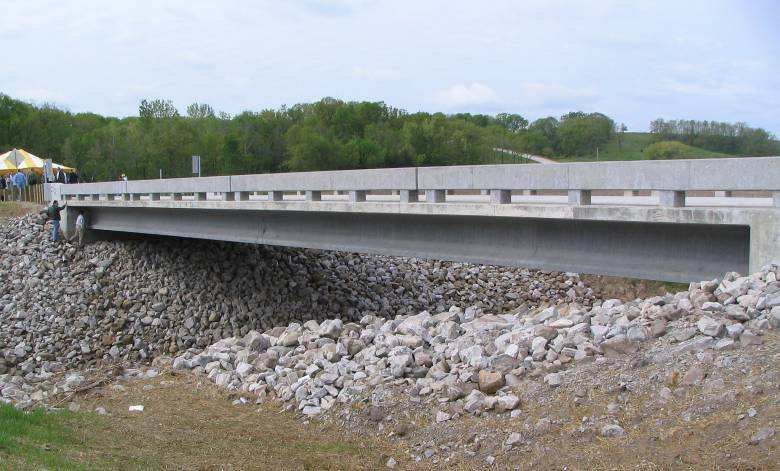
4.2 Pedestrian Bridge, Alcobendas, Spain
In Spain, the city of Alcobendas is home to a pedestrian bridge made entirely of self-compacting Ultra High Performance Concrete. The bridge’s innovative design incorporates a sinuous, undulating form, demonstrating the material’s versatility. The design was made possible due to UHPC’s superior moldability and ability to hold complex shapes without compromising structural integrity.
In the manufacturing process, self-compacting UHPC was used, which meant that the material was able to fill the formwork under its weight without the need for mechanical vibration. This was a crucial consideration as it helped maintain the intricate design features while ensuring a uniform, void-free structure.
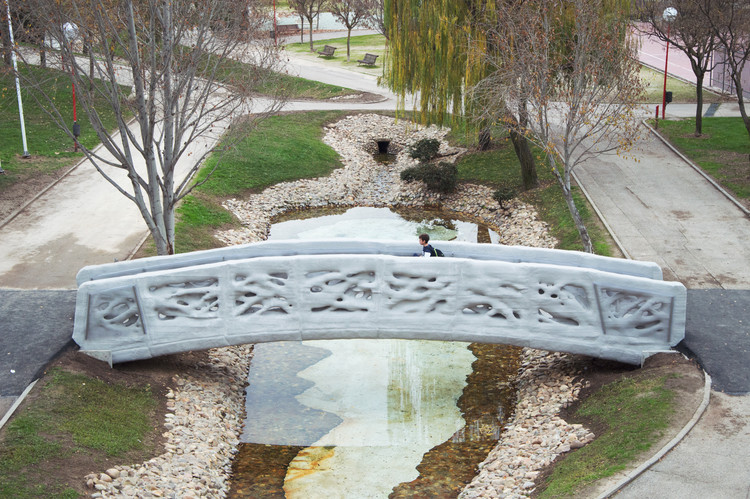
4.3 Wave Flume, Oregon State University
UHPC has also found its place in the realm of research infrastructure. At Oregon State University, UHPC was used in the construction of a wave flume – a specialized facility used for testing wave interactions with structures. UHPC’s high durability and resistance to wear were key considerations for this application.
For the wave flume’s manufacturing, the UHPC mix was designed to withstand prolonged exposure to water and the abrasive effects of sediment particles. This involved careful selection of aggregates and use of pozzolanic materials like silica fume to minimize porosity and maximize durability.
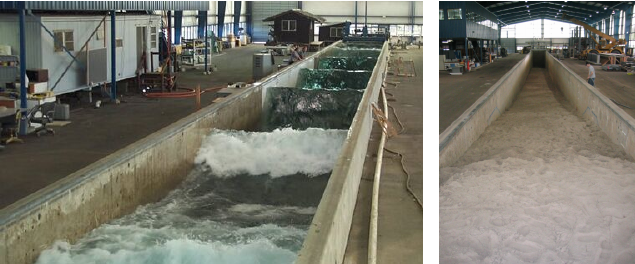
4.4 Benjamin Harrison Memorial Bridge, Virginia
The Benjamin Harrison Memorial Bridge in Virginia is a testament to the advantageous use of UHPC in bridge repair and rehabilitation. The swing bridge, which spans the James River, had originally been built using conventional materials in 1966. In 2007, as part of a repair and rehabilitation project, the original drawbridge components were replaced with UHPC materials.
The use of UHPC provided a solution that was both economically feasible and highly durable. The key manufacturing consideration for this project involved the creation of UHPC waffle panels which were light, easy to install and required less material than solid panels while maintaining an exceptional load-bearing capacity.

4.5 South Gap, Colorado
In Colorado, the South Gap project along Interstate 25 between Monument and Castle Rock, known for its heavy traffic, has seen the introduction of UHPC. The construction project involves the expansion of the highway to accommodate increased traffic volumes, and UHPC is being used in the creation of new bridge structures.
Given the high traffic volumes, a key design consideration was durability and reduced maintenance requirements. UHPC was selected for its superior lifespan and the ability to resist harsh weather conditions, salt corrosion, and heavy loads. During manufacturing, the UHPC was mixed, cast, and cured under controlled conditions before being transported to the site, ensuring optimal quality.

4.6 Michigan Avenue Bridge, Michigan
Michigan Avenue Bridge in Michigan is an exemplary showcase of UHPC applications in highway bridge deck link slabs. Link slabs, which join the bridge decks to bridge approaches, face extensive wear and tear due to traffic loads and environmental conditions.
The construction team chose UHPC for its high compressive strength and excellent durability, which were critical design considerations for the heavily trafficked bridge. In the manufacturing process, the bridge deck slabs were cast using UHPC and reinforced with steel fibers for superior tensile strength. The successful implementation of UHPC in the Michigan Avenue Bridge demonstrates its potential in extending the service life of existing structures while reducing maintenance costs.

FAQ’s
What is Ultra High Performance Concrete (UHPC)?
Ultra High Performance Concrete (UHPC) is a type of concrete that exhibits superior durability, high compressive strength, and excellent tensile capacity due to its optimized particle gradation and the addition of steel fibers.
What materials are used in the manufacturing of UHPC?
The materials used in the manufacturing of UHPC typically include Portland cement, silica fume, quartz flour, fine silica sand, water, high-range water reducer (superplasticizer), and steel or organic fibers.
Why are fibers added to UHPC?
Fibers, typically made of steel or polymer, are added to UHPC to enhance its ductility and tensile strength. They provide resistance to cracking and significantly improve the concrete’s durability.
How is UHPC mixed?
The dry materials (Portland cement, silica fume, quartz flour, and silica sand) are initially mixed together. Then, water and superplasticizer are added to form a homogeneous mix. Finally, fibers are added and the mix is poured into molds for curing.
What is the curing process for UHPC?
After the UHPC mix is poured into molds, it undergoes a curing process under specific conditions of temperature and humidity. This is typically carried out at temperatures above 20°C for a period of 48 hours to allow the material to achieve its high strength.
What are the applications of UHPC?
UHPC finds applications in various areas due to its superior properties. It’s used in building bridges, high-rise buildings, marine structures, and structures requiring high durability and strength, such as security barriers or blast-resistant structures.
What are the advantages of using UHPC?
UHPC offers several advantages including high compressive and tensile strengths, excellent durability, superior resistance to chemical attacks, weathering, and abrasion, and a longer lifespan compared to traditional concrete. It also allows for more slender, aesthetic designs due to its strength.
What is the cost of UHPC?
The cost of UHPC can vary based on the specific formulation and the location, but it is generally more expensive than conventional concrete. However, the higher upfront cost can often be offset by the material’s superior durability, longer lifespan, and reduced maintenance costs.
What is the compressive strength of UHPC?
UHPC exhibits high compressive strength typically ranging from 150 to 200 MPa, which is significantly higher than traditional concrete. This makes it ideal for structures that need to withstand heavy loads or harsh environmental conditions.
Can UHPC be used in residential construction?
While UHPC is often used in large-scale infrastructure projects due to its high performance, it can also be used in residential construction. Its superior strength and durability can be beneficial in homes, especially in areas prone to extreme weather conditions or seismic activity.
Read More

